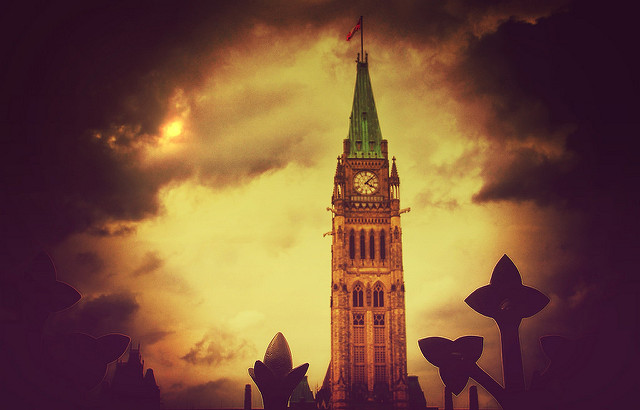Like this article? rabble is reader-supported journalism. Chip in to keep stories like these coming.
By confessing his government was starting to look like its predecessor, Justin Trudeau did a clever step down from his party position on democratic reform.
The Trudeau Liberals had promised that the 2015 election would be the last one run under the old electoral system. In early May it created a special parliamentary committee to report on alternative voting systems, proportional representation, mandatory voting, and online voting.
Initially the Trudeau Liberals announced that the composition of the all-party committee charged with consulting Canadians on electoral reform would reflect the make-up of the House of Commons, just as other parliamentary committees are constituted.
In accepting that the composition of the committee should reflect more closely the popular vote for each party, Trudeau adopted the NDP position that a new electoral map needed to be drawn up by a group that reflected votes cast in 2015 — not the current electoral system.
The Canadian electoral system is based on one used in the United Kingdom. The candidate with the largest number of votes wins a seat in parliament.
This first-past-the-post (FPTP) to decide the winner works fine, so long as there are only two candidates (or two major parties) contesting the election.
In every instance in a two-party race, the winner has the support of more than 50 per cent plus one voters. Thus, majority rule is assured in each constituency, and everywhere in the country.
Elections with three parties or more are much less likely to elect MPs who enjoy majority support. As a result the majority of voters may not be represented by a candidate of their choice.
In a multi-party system using FPTP some candidates get elected with about one-third support, leaving two-thirds of the electorate with a candidate not of their choosing to represent them.
Figuring out a way to better represent voters is the task of the now 12-member committee where the Liberals hold only five seats. The idea of the Liberal Minister for Democratic Reform is to hold a town hall in each constituency, and report back the results.
In Canada parties arise to represent regional interests and are successful under FPTP. The Progressives, the CCF, and Reform were born from discontent on the prairies. The national minority concentrated in Quebec produced the Bloc Québecois which in 1993 elected enough members in Quebec to form the official opposition in Ottawa
Currently Canada has five parties represented in Parliament, and over 20 parties are officially registered with Elections Canada.
The parliamentary committee needs to hear that changing the electoral system is not going to be enough to ensure democratic reform. Making the will of the majority prevail, while important, would not alter the structural defects of current electoral practices.
Online voting would allow for greater participation of young Canadians and enlarge voter turnout. This option should be easy for Elections Canada to offer citizens. Low voter participation is a serious short-coming of liberal democracy; making voting more user friendly is a step that can be taken before going to mandatory voting.
Women have a greater problem getting represented in the Canadian Parliament than in 60 other countries. Moving Canada up the world list from 61st place should be a big part of democratic reform.
Improved representation of women is most easily achieved through some form of proportional representation.
The current party process for selecting candidates favours the independently wealthy, or people practicing a profession such as law where partners support each others efforts to win electoral office.
Public funding for nomination campaigns is worth exploring. It may be the only way of bring about representation from the poor, and other disadvantaged groups.
Cultivation of donors remains too important to the functioning of political parties. Allowing for public funding of campaigns would reduce the role of insider access to elected officials from donors.
Media coverage of elections needs to be tightly regulated to democratic standards based on best available practices from around the world.
Public opinion polling is important enough that consideration should be given to creating an independent Canadian polling agency, asking public policy questions on a continual basis, so that parties and voters have a fair idea of how opinion is evolving.
Because elections occur at a moment between the end of one parliament and the opening of a new one, the rules that govern them need to reflect the needs of citizens to participate and inform themselves.
Democracy is fundamentally about discussion and debate not voting.
The special parliamentary committee needs to look closely at how debate and discussion are shaped in Canada before the electoral process, during it, and within parliament itself.
There is much to be learned from the years of “prime ministerial government,” which began in 1968 with the election of Pierre Trudeau, about how to do democracy better.
Read rabble’s full series on proportional representation including:
Part 1: Proportional representation is not ‘too complicated’ — the fix is in
Part 2: Activists gear up for ‘historic opportunity’ to usher in proportional representation
Part 3: Proportional representation for Canada: A primer
Duncan Cameron is former president of rabble.ca and writes a weekly column on politics and current affairs.
Photo: flickr/Onasill ~ Bill Badzo



